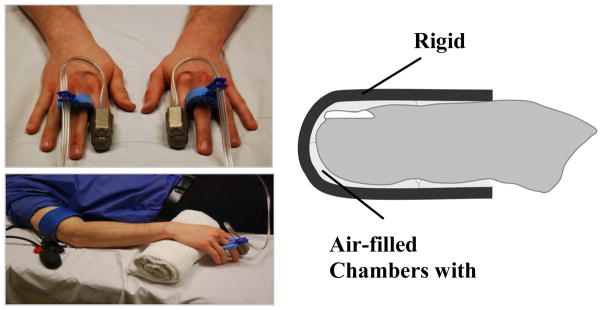Figure 1.

As shown at the top left, the thimble-like PAT device is placed on a finger from each hand. Tubing connects the device to a recording unit that transmits data directly to a computer. As shown in the diagram on the right, the device contains air-filled chambers that are inflated to approximate diastolic pressure throughout the study. Sensors allow detection of changes in finger volume with each arterial pulsation. A typical setup for a research study is shown in the bottom left panel. While the device is on the fingertip, the hand is elevated to allow the fingers to hang freely without touching any surfaces. A cuff is placed on one forearm that will be inflated to suprasystolic pressures to induce hyperemia.
